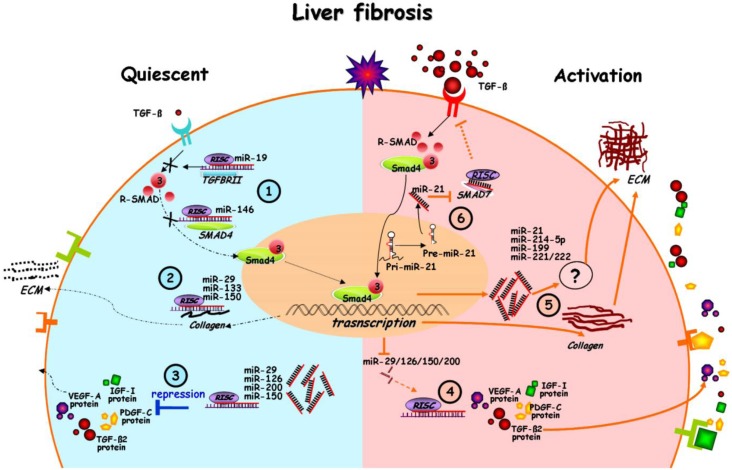Figure 2.
miRNAs in the interplay of signaling in quiescent and activated HSCs after chronic liver injury.
In quiescent HSCs, antifibrotic miRNAs, like miR-19, miR-146, miR-29, miR-133, miR-150, miR-126 and miR-200, are highly expressed. High levels of these miRNAs, in turn, lead to reduced synthesis of the TGF-β receptor II or smad-4 (1) of ECM, mainly the collagen subunits (2); or synthesis of profibrogenic mediators, e.g., VEGF-A, TGF-β2, IGF-I, PDGF-C (3); After chronic liver injury, HSCs get activated and transduce into a myofibroblastic phenotype. Myofibroblastic transition and autocrine TGF-β stimulation changes the miRNA profile, as shown in Figure 1. In response to TGF-β exposure, miR-29, miR-126, miR-150 and miR-200 are downregulated, resulting in the abolished repression of profibrogenic mediators (4); The reduced miR-29/133/150 levels then contribute to enhanced synthesis and deposition of ECM. Whereas some miRNAs are reduced by TGF-β, others, such as miR-21/214-5p/199/221/222, are stimulated and elevate ECM synthesis via an unknown pathway (5); TGF-β induced miR-21 expression results in a decrease of the TGF-β inhibitory smad-7 protein (6) (Dashed arrow lines indicate the suppression of pathways and gene expression, whereas solid arrow lines indicate stimulation).

